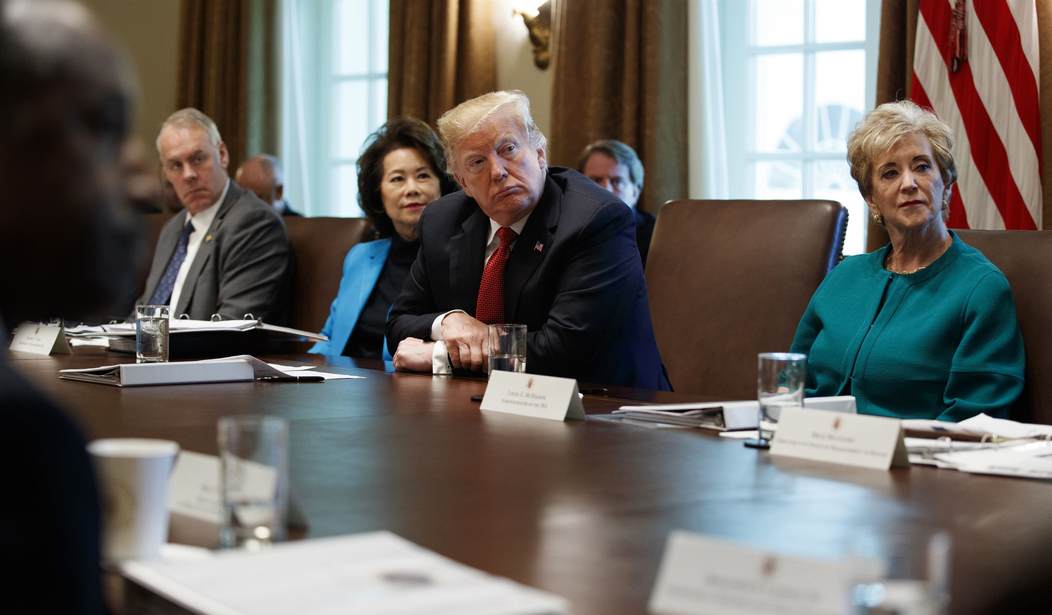And tomorrow may well be today. Starting yesterday, as Democrats and the media shrieked over the dismantling of USAID, the Wall Street Journal reported that Donald Trump will soon issue executive orders that will functionally end most of the operations at the Department of Education. The White House has plans for legislative action as well, but Trump will gut the Dept of Ed while that process takes place.
Sen. John Kennedy offered this advice for Democrats: "Call someone who cares," before warning him that Trump would come for the Department of Education next:
Pres. Trump could soon sign an executive order directing the secretary of education to dismantle the federal Department of Education, according to sources briefed on drafts of the order that have circulated among top administration officials. https://t.co/QEHHBoa9NO pic.twitter.com/5QoiMXh0Sr
— ABC News (@ABC) February 4, 2025
Trump's team is still refining the EOs and scouting out the limits of executive power for dismantling the 45-year-old department, the WSJ reported yesterday, but action will come sooner than later:
The officials have discussed an executive order that would shut down all functions of the agency that aren’t written explicitly into statute or move certain functions to other departments, according to people familiar with the matter. The order would call for developing a legislative proposal to abolish the department, the people said. Trump’s advisers are still debating the specifics of the order and the timing, the people said. ...
The order would be a step toward fulfilling a Trump campaign promise to eliminate the department, limit federal involvement in education and give more authority to the states. Conservatives were sharply critical of the Education Department under the Biden administration, particularly decisions to forgive student loans and to extend sex-discrimination protections in education to LGBTQ people. The conservative Heritage Foundation’s Project 2025 also called for eliminating the department.
Come on, man. Conservative think tanks -- Heritage included -- have called to end the Dept of Ed for decades now. Conservatives put pressure on Ronald Reagan to end it almost as soon as it began, but Reagan was more focused on the Cold War and the economy and didn't want to pick that fight in any real sense. GOP presidential candidates have paid lip service ever since to the idea that the department should be jettisoned, or at least the functions collapsed back into a Health Education & Welfare structure that existed before Jimmy Carter and Congress launched it in 1979-1980. It was one of the three departments Rick Perry promised to close in 2011 when he fumbled the answer in a GOP primary debate, for instance.
Does the WSJ even bother to pay attention to issues before reporting on them?
Anyway, the timing on this might get tricky. If Trump issues these EOs before Linda McMahon's confirmation hearing, it could gum up the works in the Senate. That would complicate the end goals in a strategic sense:
Some administration officials, including the team working with Education Secretary nominee Linda McMahon, say the White House should wait to release any executive order until after McMahon’s Senate confirmation hearing, people familiar with the matter said. McMahon’s hearing hasn’t been scheduled, as the Senate is awaiting her ethics paperwork. Some Trump advisers worried that the White House’s recent freeze on federal assistance complicated Russell Vought’s confirmation as director of the Office of Management and Budget, and they are eager to avoid a similar scenario that could endanger McMahon.
Some may shrug and wonder why that matters if Trump eliminates the Dept of Ed. The problem is that Trump can't eliminate it unilaterally; it exists via an enabling statute, which Congress would have to repeal. At least some of its functions are likely statutorily assigned as well, which is why the lawyers have to craft the EOs carefully to eliminate or transfer functions that aren't assigned by statute. The rump Dept of Ed will exist for a while, at least, and will need a firm hand to control what still is left operating.
In fact, it might last for a long while, as might USAID, although perhaps mostly in suspended animation. In order to dismantle either, Republicans have to pass new laws that repeal or at least amend the enabling statutes for both entities. (Even though USAID started off with a JFK EO, Congress passed an enabling statute in 1998, which eclipsed the EO.) That will take majorities in both the House and Senate, and would be subject to a filibuster in the upper chamber as well. As this week has shown, there aren't seven Senate Democrats who will vote to shut down either, and there probably isn't a single one. And that's assuming Trump will have all 53 Senate Republicans in support, too.
There is, however, one other way to accomplish this. The House and Senate could pass a budget resolution with a reconciliation option that could be used to close both entities. Reconciliation only requires deficit neutrality or savings, and closing either or both would provide a significant level of deficit savings. This could get paired up with more expensive Trump priorities -- making tax cuts permanent, perhaps? -- to accomplish the savings necessary for reconciliation to apply. I'd be surprised if Republicans don't use this strategy, since it's literally the only path for legislative success.
At the very least, though, Trump has taken a longstanding goal for conservatives and brought it much closer to reality than ever before. It might look ugly and chaotic, but it was never going to be pretty and orderly, which is why previous Republican presidents shied away from trying it. And that may be why Trump has become the indispensable man for the moment.








Join the conversation as a VIP Member